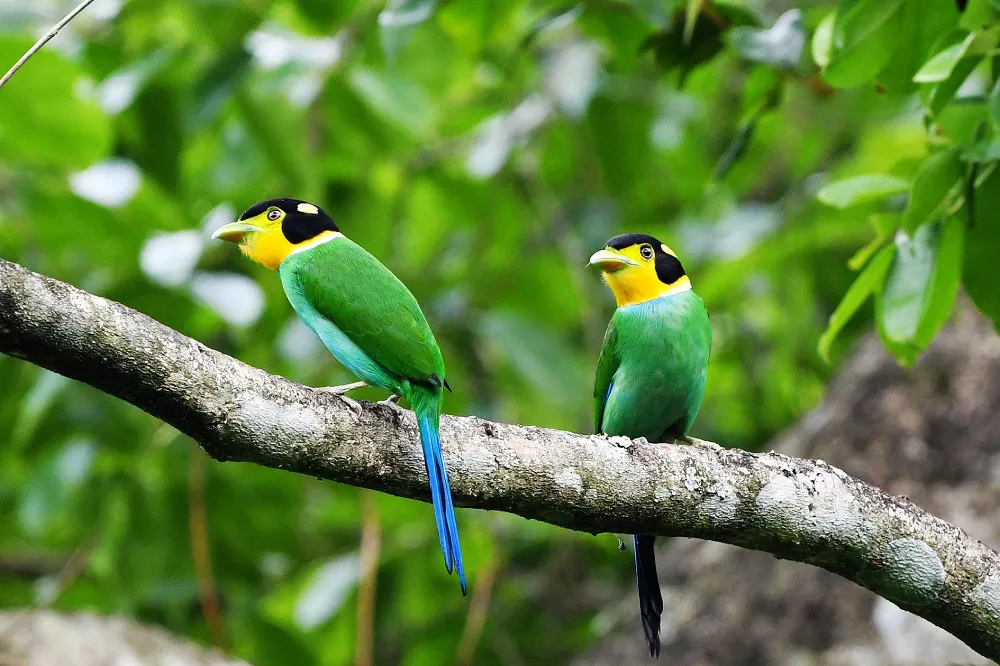The long-tailed broadbill is a small, colorful bird that belongs to the Eurylaimidae family. It is found in Southeast Asia, mainly in the tropical forests of Thailand, Malaysia, Indonesia, and the Philippines. These birds are known for their distinctive long tail feathers and bright plumage.
- Physical Characteristics:
The long-tailed broadbill is a small bird, measuring about 20-25 cm in length. They have a short, stubby beak, which is black in color. The wings are broad and rounded, and the tail is exceptionally long, making up about half of the bird’s length. The feathers on the head and body are brightly colored, with shades of green, blue, and yellow. The male and female birds look very similar, with only minor differences in coloration.
- Habitat and Distribution:
The long-tailed broadbill is found in the tropical rainforests of Southeast Asia, including Thailand, Malaysia, Indonesia, and the Philippines. They prefer to live in the lower and middle levels of the forest, where they can find insects and small fruits to eat.
- Behavior and Diet:
The long-tailed broadbill is a highly social bird and is usually found in small flocks of up to 12 birds. They communicate with each other through a variety of calls, including chirps, whistles, and trills.
The long-tailed broadbill is primarily an insectivore, but they also feed on small fruits, seeds, and berries. They are known for their unique feeding behavior, where they pluck fruit from the tree and then pass it to each other, forming a chain of birds passing food along.
- Breeding:
The breeding season for the long-tailed broadbill is from February to July. The male and female birds work together to build a nest, which is typically a shallow cup made of moss, leaves, and spider webs. The female lays a clutch of 2-4 eggs, which are incubated for approximately 16 days. Both the male and female care for the young birds, feeding them a diet of insects and other small prey.
Like many bird species, the long-tailed broadbill faces threats from habitat loss due to deforestation and forest fragmentation. The bird is also sometimes captured for the pet trade, although this practice is illegal in many countries. Conservation efforts are underway to protect the long-tailed broadbill and its habitat.
In conclusion, the long-tailed broadbill is a unique and fascinating bird species found in the forests of Southeast Asia. With its distinctive appearance, vocalizations, and acrobatic feeding style, the long-tailed broadbill is a beloved and important part of the region’s biodiversity.


 Facebook
Facebook  Instagram
Instagram  Youtube
Youtube 